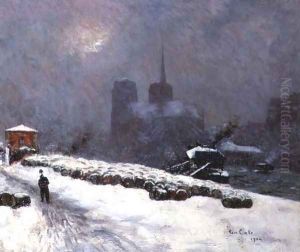Siebe Johannes Ten Kate Paintings
Siebe Johannes Ten Kate was a Dutch genre painter and watercolorist born on February 23, 1858, in Harlingen, The Netherlands. He came from an artistic family; his father, Herman Frederik Carel Ten Kate, was also a painter, known for his historical scenes and genre paintings. His brother, Mari Ten Kate, was a genre painter as well. This environment likely influenced Siebe and provided him with an early exposure to the world of art.
Ten Kate initially studied at the Royal Academy of Art in The Hague, where he honed his skills in painting and drawing. He was particularly known for his depiction of everyday scenes, often portraying the Dutch peasantry and fisherfolk. His works are characterized by their lively representation of common people engaged in daily activities, imbued with a sense of realism and attention to detail.
After his studies, Ten Kate traveled to Paris, which was the center of the art world at the time. There, he was influenced by the French Realists and Impressionists, who were exploring new ways of depicting light and color. He incorporated these elements into his own work, which helped to modernize his style and made his paintings more vibrant and impressionistic.
Ten Kate's works were well-received, and he exhibited at various venues, including the Paris Salon, which was a prestigious event for artists of that era. His paintings are noted for their use of color and the ability to capture the mood and atmosphere of the scenes he depicted.
Siebe Johannes Ten Kate died relatively young at the age of 50, on December 10, 1908, in The Hague, The Netherlands. Despite his early death, he left behind a body of work that continues to be appreciated for its contribution to Dutch genre painting at the turn of the 20th century. His paintings can be found in several Dutch museums and are collected by enthusiasts of Dutch art around the world.
